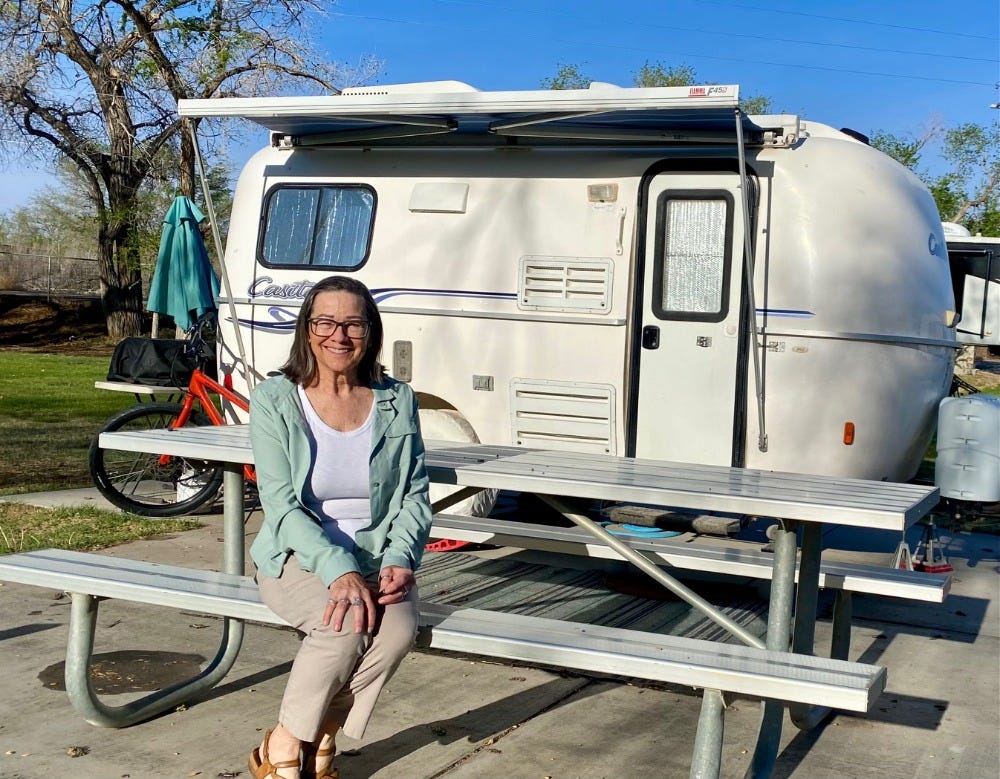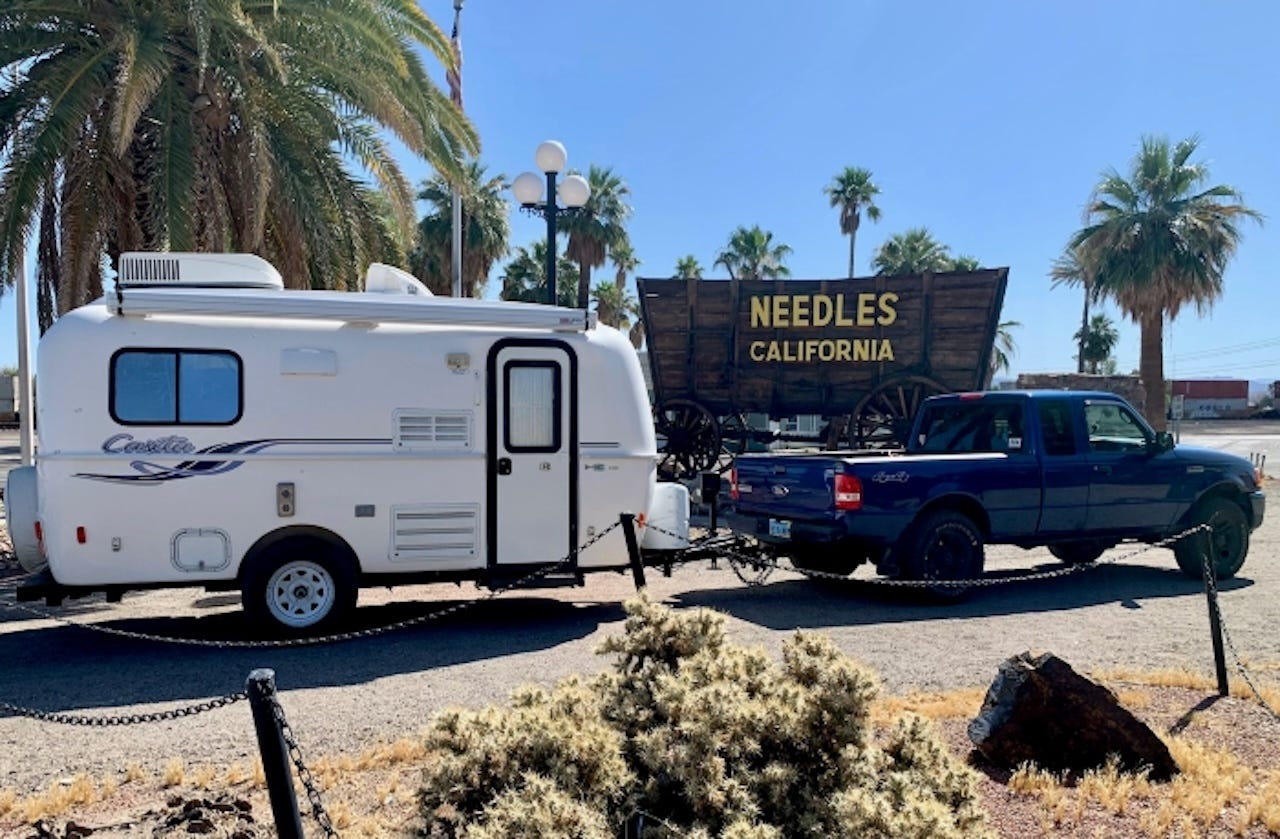
Courtesy of Lisa Williams
Lisa Williams and her husband had dreamed of traveling the US in an RV when they retired.
But that future evaporated when Williams’ husband died in 2014. The then 54-year-old housekeeper couldn’t afford the $1,200 rent for their Palm Springs, California, home and was forced to move out within six months. Williams spent the next seven years living in a backyard trailer and tiny home near her daughter in Tacoma, Washington, and, later, in a tiny apartment near her son in Las Vegas.
But a major rent increase, dismal job prospects, and persistent wanderlust led her back to the nomadic life she’d once coveted. Three years ago, Williams bought a 17-foot secondhand travel trailer and began moving between national and state parks, working and volunteering in exchange for a place to park for a few months at a time.
Like many Americans, Williams can’t afford to retire, and the rising cost of living has threatened to leave her homeless.
She barely scrapes by on the $1,764 in monthly Social Security survivor benefits she receives and the wages she makes from her paid jobs in the parks. But she has some savings and her husband’s $1,100 monthly life insurance checks to fall back on, and she doesn’t mind the cramped living quarters. In fact, her new lifestyle has become her “passion” and she fears she’d get bored or antsy staying in any one place for long. In her free time, she kayaks, hikes, and mountain bikes, and she feels a sense of belonging and community in each park.
“I did this because I didn’t feel like I had any options, but I wouldn’t go back,” said Williams, now 64.
‘It literally saved me’
Not everyone is cut out to live in a tiny space without basic amenities.
But Williams had already successfully experimented with this when she spent five years living in a backyard trailer and tiny home in Tacoma, showering exclusively at a gym for two of those years when she had nothing more than a hose for running water.
So she was immediately interested when a friend told her that parks across the country offer their paid and volunteer workers free hook-ups for their RVs or travel trailers.
After her Las Vegas landlord raised her rent from $780 to more than $1,000 in two years, Williams called up the Mojave National Preserve, which is just an hour southwest of Vegas, and they invited her to “work camp” there.
In exchange for helping visitors navigate campgrounds and selling stickers and T-shirts for 30 hours a week, Williams had a free place to park, showers and kitchens to use, free WiFi, electricity, sewer services, and laundry.
“It literally saved me,” she said. “They had everything that I needed.”

Courtesy of Lisa Williams
Since then, she’s moved seasonally — spending winters in the Southwestern desert and summers in the Southeast or higher altitude Western parks. She’s working a part-time paid job in Green River State Park in Utah until October and hopes to spend this winter in Joshua Tree National Park or Death Valley.
She felt lonely in the years after her husband died, but that’s dissipated as she’s made new friends with volunteers and park employees.
“I know that when I get to where I’m going, there will be a community of people to embrace me,” she said. “I know people all over the country now that I still keep in touch with.”
If she weren’t able to live this way, she’d likely move to Sacramento to be near her daughter and son-in-law, who’ve offered to help care for her as she ages. But she wants to keep living independently and exploring the country.
“I would probably get a job watering plants at Lowe’s or greeting people at Walmart,” she said. “But I don’t want to do that.”
The line between homelessness and
“Work camping” has become popular among older Americans, many of whom can’t afford to retire.
At the same time, homelessness in the US hit a record high in 2023, and then jumped 18% higher in 2024, according to the federal government’s annual count. Many working people are turning to living in their vehicles, staying with family and friends, or living in motels.
Many of those being pushed into homelessness, or living on the brink of it, are seniors. The portion of homeless single adults 50 or older is estimated to have grown from about 10% to 50% over the past three decades.
Luckily, Williams has family to help support her if she needs them. But she wants to keep living independently and exploring the country for as long as she can.
“I want people to know that they do have options, and to just get out there, think out of the box,” she said. “I know at the end of my life, I will have no regrets. I’ve been to amazing places and I’ve seen amazing things, and that’s just been in the last few years.”
The post A boomer struggled on $1,764 monthly in Social Security until she moved into a trailer to work at America’s parks: ‘It literally saved me’ appeared first on Business Insider.





